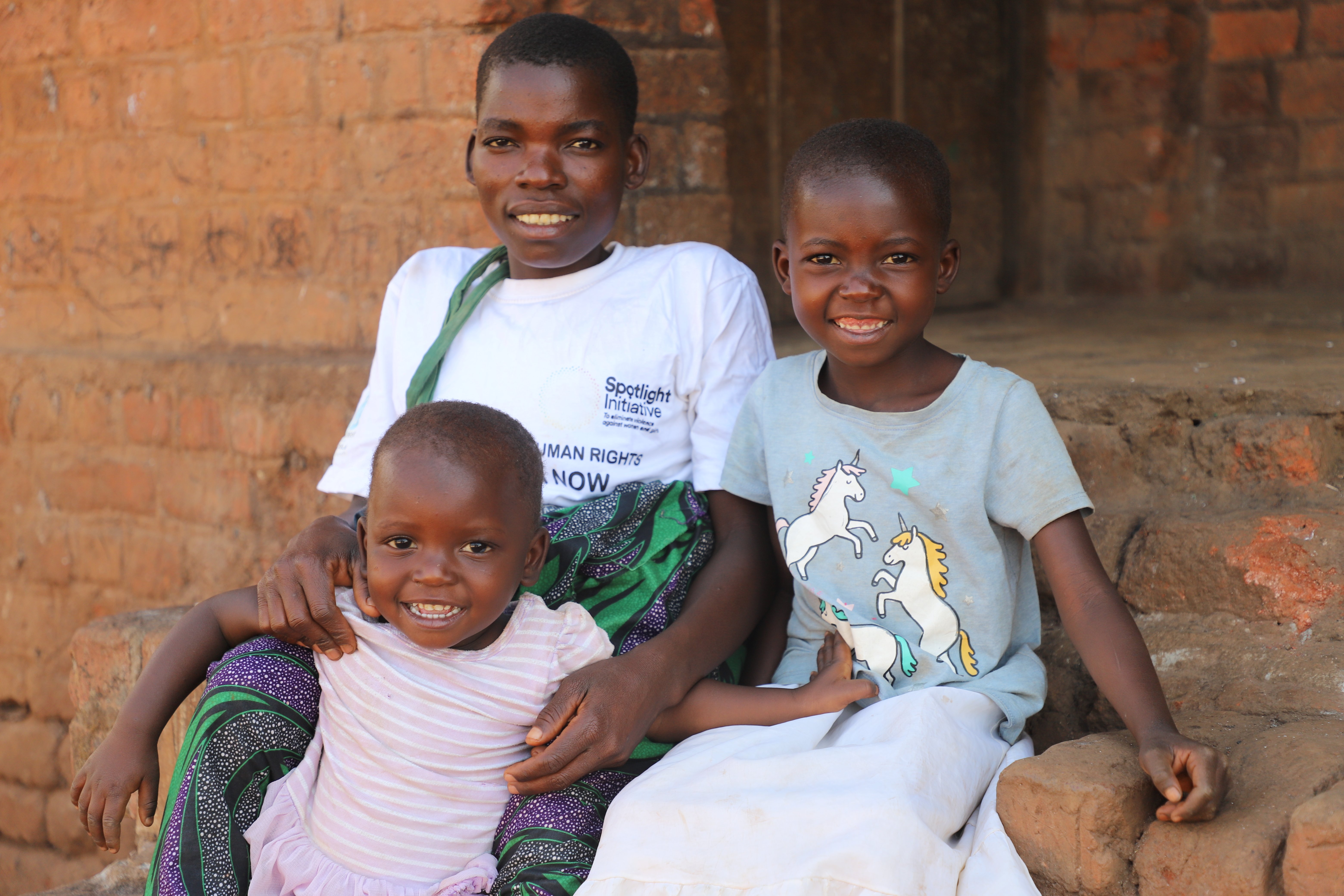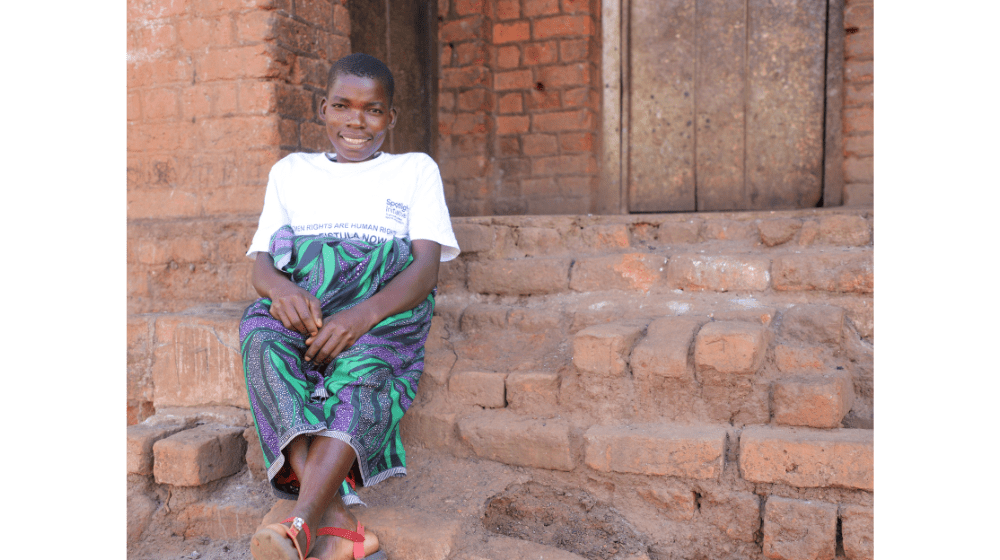Dowa, Malawi - Rachel Kachepatsonga always knew she was born different, but it didn’t affect how she related with her family and friends. However, as she grew up, things started to change. Because of Rachel’s small stature, her peers at school would look at her with inquisitive eyes.
“I didn’t face discrimination, but I was always the centre of attention at school,” she said. “However, I managed to make friends like any other kid.”
Rachel didn't go far with her primary school education; she dropped out at the primary level.
“I started school late as I was much shorter compared to other kids my age,” she said. “And by the time I dropped out, I was in my teenage years.”
Rachel was born with a condition known as dwarfism, which affects bone growth and leads to a short, proportionate stature. But this didn’t deter her from living a normal life.
When I was 17, I got into a relationship, but it didn’t last long. People ridiculed my boyfriend for dating someone like me. He then decided to end the relationship.
That’s when reality started to dawn on her. She knew her disability would be a stumbling block in her love life. From thereon, she decided to stay single. However, in her early twenties, Rachel met a man who she thought genuinely cared about her.
“He came to the village looking for work, and that’s how we met. We fell in love and then got married in 2016,” she explained.
In 2017, Rachel got pregnant and had her first baby. However, she had to go for a specialized delivery because of her height. Women with dwarfism often require specialized delivery because their physical proportions can complicate a vaginal birth, making caesarean sections a common choice. This necessity is due to the smaller pelvis size in many dwarfism conditions, which might not accommodate the baby passing through the birth canal safely for both mother and baby.
“I knew about this as I was already advised during my antenatal visits at our local health centre,” she told UNFPA. “Because of this, I was told that I had to deliver at a bigger hospital where they offered the services.”
When Rachel was eight months pregnant, she went to Dowa District Hospital as a precautionary measure. The health staff monitored her pregnancy progression up to labour. When her time came, she gave birth via caesarean section to a healthy baby girl.
After giving birth to her first child, Rachel thought it wise to start family planning. She noticed how difficult it was for her to give birth as she needed special services, and the nearest hospital offering those services is about 60 kilometres away. To reach it, one has to brave heavily eroded dusty roads plagued with ravines and ditches.
Rachel initially settled for oral pills but had to stop due to problems with the method. She then tried natural methods, which didn’t work. A year after giving birth, she got pregnant again. This time, however, the situation had changed. Her husband had married another woman and was rarely at home.
“The second pregnancy was difficult. My husband wasn’t giving me enough support,” she bemoaned.
As part of the delivery preparations, expectant mothers are requested to bring along items such as plastic sheets, cloth, and utensils to bathe the baby.
“I didn’t have the courage to ask for help from my relatives, so I delayed going to the hospital,” Rachel lamented. “When I finally went to the hospital in the ninth month, I was already in labour.”
When she arrived at Dowa District Hospital, the health staff told her she was late, as the child was already on its way. Worse still, the child was coming out feet first (breech) instead of the head. Since this wasn’t going to be a normal delivery, Rachel was referred to Kamuzu Central Hospital in Lilongwe.
“I overheard some of the nurses saying that the child had stopped breathing,” Rachel told UNFPA. “I felt my stomach and couldn’t feel any movement. I lost all hope that I would deliver a live baby. They took me to the operating theatre, and I had a safe delivery.”
After almost a week in the hospital, Rachel was discharged. Back home, she started having strange pains in her stomach. For a week, she couldn’t even go to the toilet.
“One day, I had this urge to urinate. I went to the toilet, and urine just poured from my private parts, and I knew that something was wrong,” she said. “The next day, I went to the hospital, and they told me that I had fistula.”

The news was devastating. Rachel knew a friend who suffered from the condition and went straight to her for advice. Fortunately, the friend calmed her down, assuring her that fistula can be repaired. This was during the peak of the COVID-19 pandemic, and Rachel had to live for a year and six months with the condition while waiting for help.
“It was a painful period for me,” she told UNFPA. “I couldn’t associate with my neighbours. Sometimes I would try to visit friends, but they would run away, saying I was smelling.”
In August 2021, Rachel went back to Dowa District Hospital, where she was referred to Bwaila Fistula Centre in Lilongwe, supported by UNFPA under the Spotlight Initiative funded by the European Union. She finally got repaired for the fistula and has been okay since then.
“Now, I am completely dry,” she rejoiced. “However, I have made a decision that I will not get pregnant again. I went through a hard time and nearly lost my child.”
As a means of social reintegration, UNFPA supported Rachel with a solar kit consisting of a phone charging system and a barbershop kit. In a good week, Rachel would earn MK10,000 (approx. US$10). She used part of the money to buy food and clothing for her family, and the rest she invested in agricultural inputs.
“In the past, all my maize would be finished before harvest time,” said Rachel. “We would eat it green because of hunger. But last year, I managed to harvest six bags of maize, thanks to the investment I made through proceeds from the solar set.”
Joseph Scott, Communications Analyst


